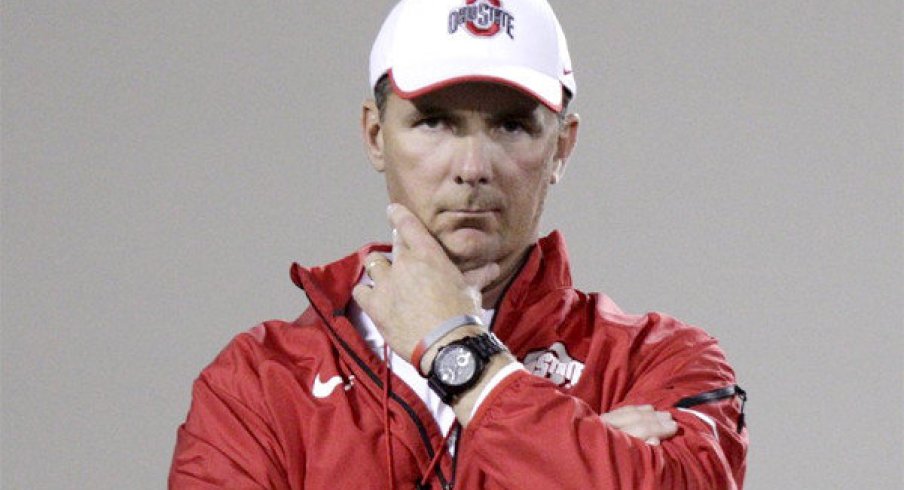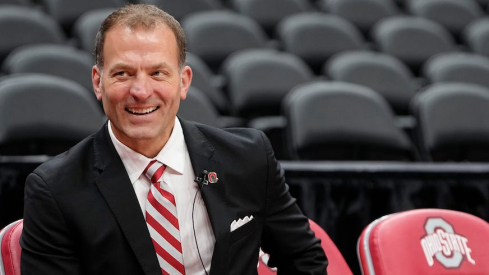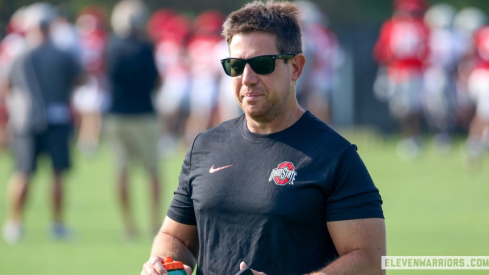Spend five minutes talking to a football coach and they’ll quickly tell you how valuable practice time is. That’s what makes the month-long buildup to the spring game so vital. And practice No. 15 is just as significant.
Every coach has a different take on spring games. They’re loved and loathed, used as game prep and treated as a glorified practice. Meyer is a proud member of the group that sees immense usefulness in spring games.
“I’m going to do it every year because I just think it’s priceless for a player to get a rep in front of 50, 60, 70,000 fans,” he said. “If I was at a school where you get 400 people, I might [stop playing the game] because what are you really getting. I just think you find out about a Dontre Wilson, you find out about a Raekawn McMillan, Johnnie Dixon.
“You find out how these kids perform when the lights go on at a place like Ohio State where you get a good crowd. As long as we can, we'll always have a spring game.”
But the number of coaches who agree are beginning to dwindle.
Oklahoma State and Texas A&M are two high profile programs who’ve said sayonara to the spring game, at least for this season. The Cowboys will host a free practice open to the public with many pointing to a competitive quarterback race as the reason. Head coach Mike Gundy has been secretive in the past.
The Aggies’ main issue is their home, Kyle Field, is undergoing an extensive renovation this offseason. But head coach Kevin Sumlin wasn’t shedding any tears over the games absence.
“I miss it for the fans,” Sumlin said. “Last year, we had 50,000 people here and ESPN here as a great recruiting opportunity, great national exposure for the program. It’s a great thing for fans. It was a beautiful day to get out and see the team. But from a football standpoint, I’ll be honest with you, you guys know me. That second half goes real quick. I'm ready to get out of there. The goal of that day is to look halfway decent and get out of that thing without getting anybody hurt. That’s the goal of that. For the fans, it’s a bigger deal.”
It’s true at most universities, but especially Ohio State. The annual Scarlet and Gray game is treated like one of seven – or eight – Saturdays in the fall when fans from all corners of the state descend on Ohio Stadium. Tailgate lots are full, grills give off the familiar aroma of hot dogs, brats and burgers and the marching band plays a soundtrack many find as well-known as the Beatles and Bruce Springsteen.
The real game feel doesn’t end with the atmosphere. Face value of game tickets reaches $20. That might be nearly $60 cheaper than a regular season game, but it’s still a considerable cost for a family of four when concessions are added into the equation.
All for a game that features split-squad teams made up just hours before the opening kick. If there is one at all. Last season’s game at Cincinnati's Paul Brown Stadium didn’t feature kickoffs.
“It’s worthless to us when you have guys playing with starters and guys that are never going to play just to make two different teams,” Sumlin said. “We’ll probably get more out of it from a practice standpoint.”
Sumlin’s opinion isn’t wrong. The spring game is one day, while there are two weeks worth of practices where teams set the two-deep, add depth and create cohesion. During the month of March, one of Meyer’s main focuses has been developing and furthering the culture of the 2014 team.
Four to six seconds of relentless effort and going hard from point A to point B have been staples of the Meyer message. Effort trumps all else.
“I want to make sure there's clarity of purpose at Ohio State,” Meyer said. “And it’s not being scared of making a mistake, it’s not being timid. It’s a very aggressive approach to everything that we do.”
Meyer asks his team to play angry, and that aggression and ferocity is channeled toward the opponent. Ohio State’s haggard defense became a major issue at the conclusion of last season with Meyer vowing to correct any lingering mishaps.
The hiring of Larry Johnson and Chris Ash were the first step. Now, it’s about putting together the best product on the field. The most efficient unit involves the best 11 players doing their 1/11th, according to Meyer.
“I’m the kind of person we don’t blame and complain and defend. We call it BCD,” he said. “There’s not a whole lot of BCD around here. We’v got to find out what the issue is and fix it. Obviously, there’s some issues, and if you’re blame and complain, you're going to blame players and blame coaches. We don’t do that. We try to find out the issue and fix the issue. Obviously, if you have insubordination or bad people, you have to eliminate things. But we don't have that here.”
It’s a buy-in haven with all hands on deck. Even former Rutgers and Buccaneers head coach Greg Schiano stopped by for three days last week. Before that, the offensive staffs from Clemson and Texas A&M visited Ohio State’s coaches. Any and all information is being gathered to improve the quality of play.
“There’s never been a game, in my 27 years of coaching, that I’ve seen a team that didn't play hardest win that game,” Meyer said. “Lack of execution and lack of technique, you can overcome that with incredible effort. You can’t overcome lack of effort with great technique. It doesn't happen. At some point, you’ll fail.”
And it might even be in front of thousands of fans at the spring game.


